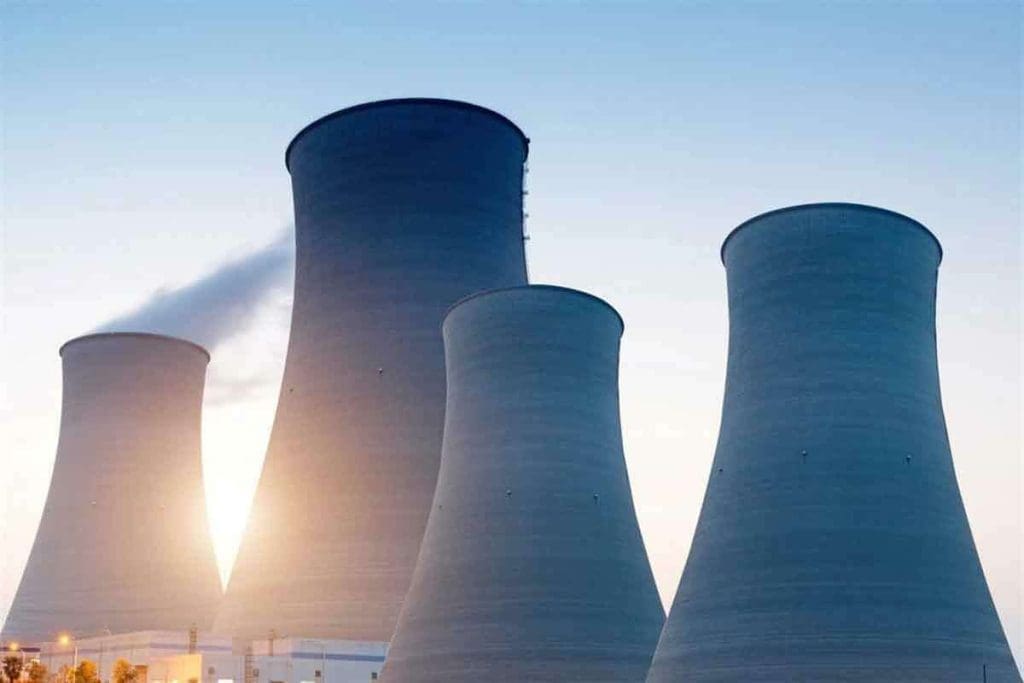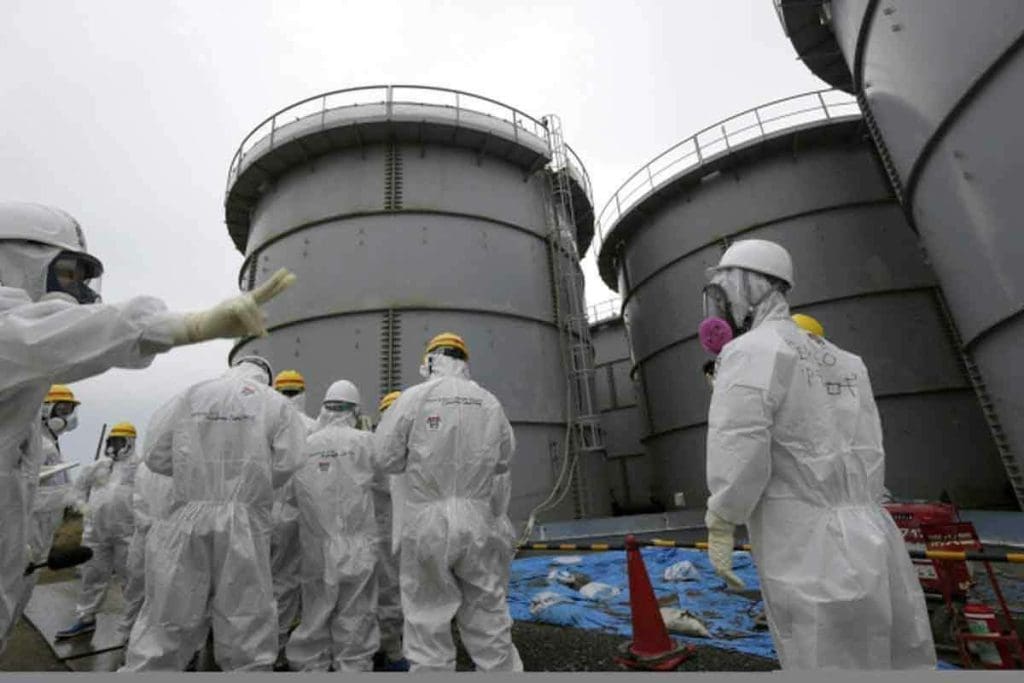Last Updated on November 27, 2025 by Bilal Hasdemir

We often think of nuclear energy as just for making electricity. But it’s used in many other ways in our daily lives. From medical treatments to products we use every day, the applications of nuclear power play a big role in improving health, safety, and modern living.
Nuclear technology has many benefits. It helps in medicine, agriculture, industry, and even space exploration. For example, hospitals use radioisotopes to sterilize equipment and treat cancer.
Nuclear energy is also used to keep food fresh longer and power smoke detectors in homes. These examples show how nuclear power improves our lives and supports many industries.
Key Takeaways
- Nuclear energy is used in medicine for cancer treatment and sterilizing medical equipment.
- Food irradiation extends shelf life and reduces spoilage.
- Nuclear power is used in consumer products like smoke detectors.
- It generates electricity for cities and powers naval vessels.
- Nuclear technology supports deep space missions.
The Science Behind Nuclear Power

Nuclear power comes from nuclear fission and fusion. These processes release a lot of energy. This energy is used to make electricity or heat.
How Nuclear Fission and Fusion Work
Nuclear fission happens when an atom splits into smaller parts. This releases energy, neutrons, and gamma radiation. It starts when a neutron is absorbed by a special nucleus, like uranium-235.
The nucleus then splits, releasing more neutrons. These neutrons can start more fission, creating a chain reaction. Nuclear technology uses this to make energy.
Nuclear fusion combines two light nuclei to make a heavier one. This releases energy, like the sun does. But making fusion work for energy is a big challenge.
From Atoms to Energy: The Conversion Process
The energy from fission is turned into electricity in a few steps. First, the heat from fission makes steam. This steam then turns turbines to make electricity.
The reactor core is where fission happens. It’s designed to keep the reaction controlled. Neutron absorbers and moderators help keep it stable. The heat is then carried away by a coolant to make steam.
Key Applications of Nuclear Power in Modern Society

Nuclear power plays a big role in many areas of our lives. It’s not just for making electricity. It also helps in medicine, agriculture, and industry.
Beyond Electricity: The Diverse Uses of Nuclear Technology
Nuclear power is used in many ways, not just for electricity. In medicine, it helps with treatments and tests. For example, it’s used in cancer treatments and imaging tests.
In agriculture, it helps grow more food and keep it fresh longer. This is done through a process called irradiation. It also has uses in industry, like tracing and measuring materials.
Nuclear technology is all around us, even if we don’t always notice it. For instance, nuclear technology is used in smoke detectors and atomic clocks. These examples show how important and versatile nuclear power is in our daily lives.
Economic and Environmental Impact of Nuclear Applications
Nuclear power has big effects on the economy and the environment. It creates jobs and boosts local economies. The cost of electricity from nuclear power is often lower than other sources.
It’s also good for the environment because it produces less carbon dioxide. But it does have challenges like dealing with nuclear waste.
| Application | Economic Impact | Environmental Impact |
| Nuclear Power Plants | Job creation, competitive electricity costs | Low-carbon energy, nuclear waste challenges |
| Medical Applications | Advanced medical treatments, economic benefits through improved health | Minimal environmental impact |
| Agricultural Applications | Improved crop yields, food security | Potential for reduced chemical pesticide use |
In conclusion, nuclear power has many uses that affect our society. It’s important to understand these uses and their effects on the economy and environment. This helps us see how nuclear power plays a big role in our lives.
Medical Applications: Saving Lives Through Nuclear Technology
Nuclear technology is key in modern medicine. It changes how we find and treat diseases. It’s used for imaging, cancer treatment, and cleaning medical tools.
Diagnostic Imaging and Nuclear Medicine
Nuclear medicine is vital for seeing inside the body. It uses special isotopes to make detailed pictures. This helps find diseases early, leading to better care.
This technology has changed medicine a lot. It lets us spot cancer, brain issues, and heart problems more accurately.
Cancer Treatment Through Radiation Therapy
Radiation therapy is a big part of fighting cancer. It uses strong radiation to kill tumor cells. This method is precise, aiming to harm only the bad cells.
Studies show radiation therapy works well against cancer. We keep improving it to make treatments better and safer.
Sterilization of Medical Equipment
Nuclear tech also cleans medical tools. Gamma radiation kills germs, making equipment safe. This is key to stopping infections in hospitals.
Using gamma radiation to sterilize is common in healthcare. It makes sure tools are clean, keeping patients safe.
Food Security: Extending Shelf Life Through Irradiation
Nuclear technology is key to food irradiation. This method kills harmful bacteria and makes food last longer. It’s seen as a way to boost global food security by cutting down on food waste and making food safer.
The Science of Food Irradiation
Food irradiation uses ionizing radiation, like gamma rays, to kill bacteria and parasites. This doesn’t make the food radioactive. Instead, it damages the DNA of pathogens, stopping them from reproducing. The science behind it is simple: ionizing radiation kills harmful organisms without harming the food’s nutritional value or safety.
Benefits of Food Irradiation:
- Extended shelf life of perishable goods
- Reduced risk of foodborne illnesses
- Enhanced global food security
- Potential to reduce food waste
Benefits for Global Food Supply
Food irradiation offers many benefits for the global food supply. It lowers the risk of foodborne illnesses, improving public health. It also makes food last longer, reducing waste and boosting food security, which is vital in areas with limited food resources.
“Food irradiation is a proven technology that can significantly reduce the risk of foodborne diseases, protecting public health and improving food security.” –
International Atomic Energy Agency
Consumer Acceptance and Labeling Requirements
How many people accept irradiated food varies worldwide. Some countries welcome it, while others are more hesitant. Labeling rules for irradiated foods also vary, with many countries requiring clear labels to inform consumers. Knowing these rules is key to making food irradiation more common.
| Country | Status of Food Irradiation | Labeling Requirements |
| United States | Approved for various food products | Radura symbol and ‘Treated with radiation’ |
| European Union | Approved with restrictions | ‘Irradiated’ or ‘Treated with ionizing radiation’ |
| Australia | Approved for specific applications | Radura symbol and ‘Treated by irradiation’ |
Consumer Products: Nuclear Technology in Your Home
Nuclear technology is all around us, from smoke detectors to atomic clocks. It makes our lives safer and more efficient. It’s in many products we use every day.
Smoke Detectors and Americium-241
Smoke detectors use a special kind of nuclear technology. They have a tiny bit of americium-241, a radioactive isotope. This isotope sends out alpha particles.
When smoke gets in, it messes with these particles. This sets off the alarm. It’s a big help in keeping our homes safe from fires.
Americium-241 is chosen for its long-lasting power and how it sends out alpha particles. These particles are caught by a sensor. This shows how nuclear tech can be used for good.
Atomic Clocks and Precise Timekeeping
Atomic clocks also use nuclear tech, but in a different way. They rely on the vibrations of atoms, like cesium-133. This helps keep time super accurate.
Even though we don’t have them at home, atomic clocks are key. They help keep our tech, like computers and GPS, working right. This is vital for many things we do every day.
Other Household Items Using Nuclear Technology
There are more ways nuclear tech is used in our homes. For example, some lightning detectors and thickness gauges use radioactive isotopes. Also, some old TV sets and other devices had tiny amounts of radioactive stuff. But now, we’re more careful about using it.
These examples show how nuclear tech is used in many products. It makes our lives better and safer in many ways.
Energy Production: Powering Communities and Vessels
Nuclear power is a key energy source for many uses, like making electricity and powering ships. It’s efficient and doesn’t pollute much, making it important for our energy needs.
Nuclear Power Plants and Electricity Generation
Nuclear power plants make electricity by using the energy from splitting atoms. This creates heat, which turns into steam. The steam then powers turbines to make electricity for homes and businesses. Nuclear power plants are a big part of the world’s electricity, a clean alternative to fossil fuels.
The good things about nuclear power for making electricity are:
- It gives a steady and reliable power supply
- It produces less greenhouse gas than burning fossil fuels
- It packs a lot of energy, more than fossil fuels
Nuclear-Powered Naval Vessels
Nuclear reactors power ships like submarines and aircraft carriers. These reactors let the ships go long distances without needing to refuel. Nuclear power makes naval vessels more effective, allowing them to stay at sea longer and be more flexible.
The benefits of nuclear power for ships are:
- They can go farther and stay longer at sea
- They move faster and perform better
- They don’t need to refuel as often, making them harder to detect
Low-Carbon Benefits of Nuclear Energy
Nuclear energy is clean, producing no greenhouse gases when it’s used. Using nuclear power helps us use less fossil fuels and fight climate change. Nuclear energy is key to a greener future.
The good things about nuclear energy are:
- It cuts down on greenhouse gas emissions
- It makes our energy mix more secure
- It helps us move towards a sustainable energy future
Space Exploration: Nuclear Power Beyond Earth
Nuclear power has changed how we explore space. It uses energy from radioactive decay to power spacecraft. This lets them run for a long time.
Radioisotope Thermoelectric Generators (RTGs)
RTGs are key for space travel. They turn radioactive decay heat into electricity. This makes them a reliable power source for space missions.
Key benefits of RTGs include:
- Long-term reliability
- Ability to operate in extreme environments
- Independence from solar radiation
Famous Space Missions Using Nuclear Power
Many space missions have used nuclear power. Voyager 1 and 2, launched in 1977, are examples. They’re sending data back to Earth even now.
Some of the most significant missions using nuclear power include:
- Voyager 1 and 2
- Cassini
- Curiosity Rover
Future Nuclear Propulsion for Deep Space Travel
Nuclear propulsion is key for deep space travel. New systems are being made. They aim to make space travel faster and more efficient.
Potential advantages of nuclear propulsion include:
- Higher specific impulse (efficiency)
- Greater thrust-to-power ratio
- Potential for faster travel times
Safety and Regulation of Nuclear Applications
Keeping nuclear applications safe is key to protecting people and the environment. As nuclear tech grows, making sure it’s used safely is more important than ever.
We count on global oversight and strong safety steps to lower nuclear risks. The International Atomic Energy Agency (IAEA) is a big help in making nuclear use safer and more secure worldwide.
International Atomic Energy Agency Oversight
The IAEA sets safety standards and helps its member countries use nuclear tech wisely. This includes helping in fields like medicine, energy, and industry.
- Developing safety standards for nuclear facilities and activities
- Providing technical assistance and training to member states
- Conducting safety reviews and inspections
Working with the IAEA, countries can make sure nuclear use is safe and secure. This reduces the chance of accidents and radiation exposure
Public Safety Measures and Radiation Protection
Keeping the public and the environment safe from nuclear risks is a big part of nuclear rules. We take many steps to protect everyone from nuclear dangers.
- Establishing radiation protection standards
- Monitoring radiation levels and environmental impact
- Developing emergency preparedness and response plans
Good radiation protection needs a full plan, including constant checks and assessments. This helps spot and fix any risks quickly.
Future Innovations in Nuclear Technology
The future of nuclear technology is set to change many areas of our lives. This includes how we get energy and medical treatments. We’re seeing big steps forward in several important areas.
Small Modular Reactors and Microreactors
Small modular reactors (SMRs) and microreactors are exciting new developments in nuclear energy. They offer better safety, lower costs, and can grow in size. This is a big change from old nuclear reactors.
- SMRs are smaller and more efficient. They’re perfect for remote areas or small power systems.
- Microreactors are even smaller. They’re super portable and flexible for power in many places.
These new reactors will be key in the future energy mix. They promise clean, reliable power.
Nuclear Medicine Breakthroughs on the Horizon
Nuclear technology is also making big strides in medicine. Nuclear medicine uses radioactive isotopes for diagnosis and treatment. Discoveries are helping us fight diseases better.
- New medicines are being made to target specific diseases. This makes diagnosis and treatment more effective.
- Improved radiation therapy is treating cancers more precisely. This reduces side effects and boosts patient success rates.
These advances in nuclear medicine are changing healthcare. They offer new hope for patients and doctors.
Looking ahead, nuclear technology will keep shaping our world. With ongoing research, we’ll see more amazing innovations. These will make our lives and the world better.
Conclusion: The Enduring Impact of Nuclear Power on Daily Life
Nuclear power greatly affects our daily lives. It changes many areas, like medicine, food, and energy. We’ve seen how nuclear tech is used in healthcare, food safety, and even space.
In medicine, nuclear power helps with imaging, treating cancer, and cleaning medical tools. It’s also in everyday items like smoke detectors and atomic clocks. These items work thanks to nuclear tech.
Nuclear power is key to a cleaner future, mainly in generating energy. Its uses are wide and show its big role in our lives.
Learning about nuclear tech’s many uses helps us see its lasting effect. It shows how nuclear power can help shape our future.
FAQ
What are 5 examples of nuclear energy?
Nuclear energy is used in many ways. It powers electricity, helps in medical treatments, and preserves food. It’s also found in smoke detectors and helps in space exploration.
How is nuclear energy used in everyday life?
Nuclear energy is a big part of our daily lives. It’s used in medicine, food preservation, and in household items. It also powers our electricity and helps in space exploration.
What is one real-world example related to nuclear energy?
A real-world example is using radioisotopes in medical imaging. This helps doctors diagnose diseases.
How do we use nuclear energy in our everyday lives?
We use nuclear energy in many ways. It’s used in medicine, in consumer products, and to generate electricity.
What can nuclear power be used for?
Nuclear power has many uses. It can generate electricity, help in medical treatments, and even in food irradiation. It’s also used in naval propulsion and space exploration.
What uses nuclear energy?
Nuclear energy is used in many sectors. It’s used in medicine, agriculture, industry, and for energy production.
What are the uses of atomic power?
Atomic power is used for electricity generation, medical treatments, and in various industrial applications.
How can we use nuclear energy?
We can use nuclear energy in many ways. It’s used for electricity generation, medical treatments, and even in space exploration.
What are examples of nuclear power?
Examples of nuclear power include nuclear power plants and nuclear-powered naval vessels. It’s also used in space exploration with radioisotope thermoelectric generators.
What can nuclear power do?
Nuclear power can do a lot. It can generate electricity, power naval vessels, and even enable deep space travel with radioisotope thermoelectric generators.
References
- National Institute of Biomedical Imaging and Bioengineering. (2020, August 31). Nuclear Medicine. https://www.nibib.nih.gov/science-education/science-topics/nuclear-medicine






